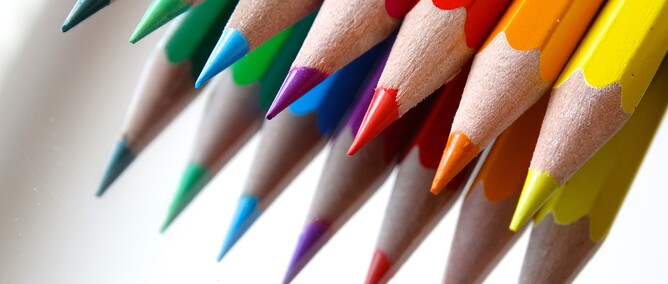Someone recently asked us how the design team at The Imagination Factory approaches repeatable idea generation in the projects we work on. It made us stop and think and we ended up with a list of 10 top tips for having great ideas which we thought might be useful to share.
When we run our Innovation Training courses we ask how many people in the room like to draw. The number of hands that go up always varies but it's never more than half of the participants. But if we asked that same question to a room full of 5 year olds practically every hand would eagerly be in the air.
Something happens as we grow up that means many of us lose the connection with drawing as a way of thinking and no longer find it enjoyable. Instead we rely much more heavily on written and verbal communication even though we all know that a picture speaks a thousand words.
And sketching is not just a way to communicate ideas. There is evidence to suggest that the act of drawing something actually stimulates parts of the brain needed for creativity. We will all know people that can't stop themselves from doodling during meeting. This is often interpreted as a response to boredom but there is a school of thought that believes that people who doodle are actually sub-consciously preparing their brains for activity.
Whatever the truth about doodling we have seen the results first-hand of encouraging people to sketch during idea generation sessions even if they have to overcome painful embarrassment about how they perceive their own ability to draw.
It's also important to understand that we are not talking about fine art style drawings here. We usually insist that people use a thick black marker and Post-It notes because it avoids the temptation to try and put too much detail into the sketch or spend too long trying to perfect it.
Finally, there is a serendipitous opportunity when people communicate through drawing that actually comes about from inaccuracy in the sketch. We have often seen someone in a group look at someone else's drawing of an idea and mis-interpret it only to find that this inspires another set of completely different ideas.
So, next time you are trying to come up with some new ideas for solving a challenge grab a handful of Sharpies and Post-It notes and get your team sketching!
Something happens as we grow up that means many of us lose the connection with drawing as a way of thinking and no longer find it enjoyable. Instead we rely much more heavily on written and verbal communication even though we all know that a picture speaks a thousand words.
And sketching is not just a way to communicate ideas. There is evidence to suggest that the act of drawing something actually stimulates parts of the brain needed for creativity. We will all know people that can't stop themselves from doodling during meeting. This is often interpreted as a response to boredom but there is a school of thought that believes that people who doodle are actually sub-consciously preparing their brains for activity.
Whatever the truth about doodling we have seen the results first-hand of encouraging people to sketch during idea generation sessions even if they have to overcome painful embarrassment about how they perceive their own ability to draw.
It's also important to understand that we are not talking about fine art style drawings here. We usually insist that people use a thick black marker and Post-It notes because it avoids the temptation to try and put too much detail into the sketch or spend too long trying to perfect it.
Finally, there is a serendipitous opportunity when people communicate through drawing that actually comes about from inaccuracy in the sketch. We have often seen someone in a group look at someone else's drawing of an idea and mis-interpret it only to find that this inspires another set of completely different ideas.
So, next time you are trying to come up with some new ideas for solving a challenge grab a handful of Sharpies and Post-It notes and get your team sketching!
